NOTE: Though I've seen 120+ of the films released this year, I still haven't seen a few films that I've heard are noteworthy: Antichrist, The Imaginarium of Dr. Parnassus, Crazy Heart, A Single Man and Away We Go. I also haven't seen several foreign and independent films that a lot of critics are raving about. With that in mind, here's my list.
NOTE: Though I've seen 120+ of the films released this year, I still haven't seen a few films that I've heard are noteworthy: Antichrist, The Imaginarium of Dr. Parnassus, Crazy Heart, A Single Man and Away We Go. I also haven't seen several foreign and independent films that a lot of critics are raving about. With that in mind, here's my list.
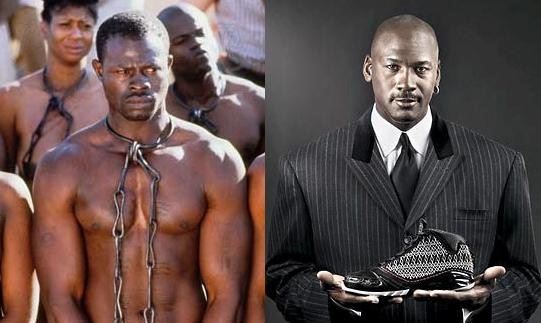
NOTE: This post is an expansion of an argument originally made in episode #87 of MovieChatter, which can be found here. It is not meant to be read as an attack on Space Jam, Michael Jordan, or capitalism, but simply as an exploration of how historical and cultural attitudes can unintentionally affect the production and content of art.
For young boys growing up in the mid-90s, Space Jam was the equivalent of a cinematic wet dream. Whoever decided to take Michael Jordan and Bugs Bunny and put them together in the same movie was a genius. I’ve never been much of a sports fan, but even as a child I had seen enough commercials for Nike and underwear to know about Michael Jordan. I knew that he met the American standard of “cool.” And I was already absolutely certain that the Looney Tunes were one of the most brilliant artistic creations of all time. So any film that put them together in the same frame, let alone for 90 minutes, automatically deserved an honorary Academy Award for Best Motion Picture Of All Time.
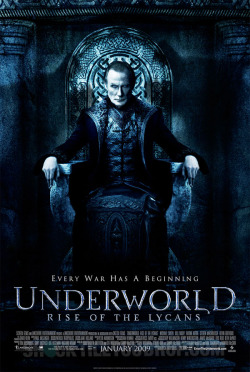 Note: This review was originally published in Technician on January 27, 2009.
Note: This review was originally published in Technician on January 27, 2009.
-----
Underworld shows itself a tame breed
Do you like vampires? What about werewolves? If so, then supposedly you're frothing at the mouth to see Underworld: Rise of the Lycans, the latest film in the franchise about a war between the two mythical species. Unfortunately, you're better off staying at home, because not only does it fail to live up to the previous installments, it's just an awful film in general.
The first two Underworld films, while not fantastic, at least felt like they were trying to achieve something. Characters were multi-layered, there were various dimensions to their motivations, and the mythology was more creative and richer than most fantasy films. Unfortunately, this prequel feels like it was made with no thought in mind except to make some more money for the studio. Forget about making a good film.
The film takes place hundreds of years before the original. Vampires and Lycans (werewolves) are at war with each other, and the leader of the vampire coven, Viktor (Bill Nighy), decides to enslave the Lycans and use their unique abilities to his advantage. Unfortunately for him, his daughter Sonja (Rhona Mitra) is having an affair with Lucian (Michael Sheen), the first of a new breed of Lycan who has the ability to transform at will. One thing leads to another, and it isn't long before Lucian is leading a Lycan uprising.
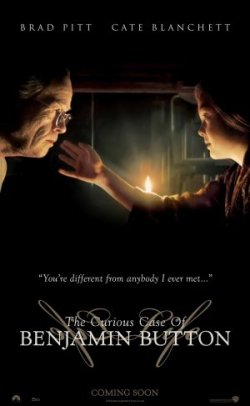 Note: This article was originally published in Technician on January 12, 2009.
Note: This article was originally published in Technician on January 12, 2009.
-----
Button's disabilities aren't really that big of a deal
At least, that seems to be the message promoted by Hollywood’s latest entry into Oscar-season, The Curious Case of Benjamin Button. Based on the short story by F. Scott Fitzgerald, the film follows a man (Brad Pitt) with one unique attribute: he ages backward. However, based on how he’s treated by other characters, this really isn’t anything out of the ordinary.
Indeed, most of the people that meet Benjamin don’t realize his peculiar state of being. His friends and family don’t seem too interested in even asking what it’s like to grow younger. The only person who seems to give it the attention it deserves is his one true love, Daisy (Cate Blanchett), and that’s because it could have catastrophic effects on their relationship. Director David Fincher and writer Eric Roth seem much more concerned with telling a story about how other people affect Benjamin, rather than on how he and his condition affect others.
Roth is perhaps best known as the writer behind another film about a man with a unique condition: Forrest Gump. Structurally speaking, Benjamin Button is virtually identical. Boy has condition. Boy meets girl. Boy can’t be with a girl for a while. Boy has some extraordinary life experiences. But even though both films deal with similar ideas, they are two vastly different pieces of work.
 Note: This article was originally published in Technician on December 1, 2008.
Note: This article was originally published in Technician on December 1, 2008.
-----
'Australia' gives an uneven outback ride
Just when you thought the only thing to see in theaters was teen vampires or mindless action, behold! There’s a new epic drama by the director of Moulin Rouge! Australia promised to be a timeless throwback to the epic romances of the past, but does it deliver? Sometimes.
The film follows a widowed English aristocrat (Nicole Kidman) trying to protect her newly inherited ranch from a corporate takeover. Though it doesn’t sound like the most exciting plot, there are enough twists and turns ranging from a cattle drive across the desert to a Japanese military invasion that it feels surprisingly fresh and intriguing. Hugh Jackman plays the widow’s herder-turned-lover and newcomer Brandon Walters shines as an Aboriginal boy.
The problem with Australia lies not in its ambition but in its execution. Though the premise is an engaging one, it’s as if Luhrmann didn’t know what kind of movie he was making. A serious drama? Romance? Slapstick comedy? An homage to the old-fashioned epics of the 30s and 40s? The film breezes through so many genres over its three-hour runtime that it’s very difficult to figure out how one is supposed to be feeling while watching it.
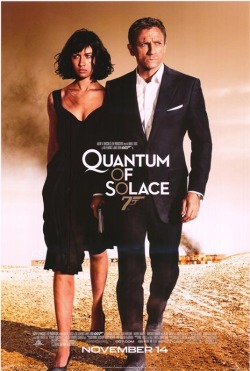 Note: This article was originally published in Technician on November 18, 2008.
Note: This article was originally published in Technician on November 18, 2008.
-----
'Quantum of Solace' hits the mark
It should be stated up front that I am not a James Bond fanatic. I have not seen all the films in their entirety. Neither am I familiar with the intricacies of Bond lore. All I know is that they’re usually enjoyable, and that if you’re a Bond fan, you’ll probably enjoy Quantum of Solace. And even if you’re not, there’s enough substance amidst the explosions and car chases to separate it from the usual Bond routine.
For starters, there’s Daniel Craig. Once again, he shows why he’s the best Bond since Connery, walking the delicate line between being the “blunt instrument” of Casino Royale and the suave and sophisticated agent of the classics. This isn’t your grandma’s Bond –- this is a newer, edgier, more naïve Bond.
The film picks up right where the last one left off, with our hero in possession of the mysterious Mr. White, whose manipulations have led to the death of his one true love. Olga Kurylenko provides support as Camille, a young woman fighting alongside Bond to get to another target. While her role is hardly as memorable as that of Eva Green in Casino Royale, she has an eerie Vesper-like quality which adds an interesting dimension to their relationship. Both are hungry for revenge, and only one of them will carry it out by the end of the movie.
 Note: This article was originally published in Technician on November 10, 2008.
Note: This article was originally published in Technician on November 10, 2008.
-----
'Role Models' defines a model comedy
Just when you thought the R-rated comedy season had ended, we are treated to another dose of raunch and irresponsible behavior in Role Models. This marks the latest release from Universal, whom I can only assume is seeking to compete with last week’s Zack and Miri Make A Porno. Thankfully, where the latter failed, this film succeeds and manages to find a good balance between vulgarity and heartfelt drama.
The film follows two irresponsible energy drink representatives (Paul Rudd and Sean William Scott) who are forced to enroll in a Big Brother-style program for troubled kids. They’re put in charge of mentoring Augie and Ronnie, two young teens each with their separate set of problems. And when irresponsible adults meet irresponsible kids, you know something funny is bound to happen.
And does it ever. Role Models is the funniest film of the year so far, with the possible exception of Forgetting Sarah Marshall. Rudd and Scott are in top form, and deliver punchlines with pitch-perfect timing. Whether it’s through conversations about the true nature of coffee-cup sizes or how to properly scope out well-endowed women, the script is filled with snappy dialogue that might fall flat in the hands of lesser actors. But they make it work, and it doesn’t take long for the viewer to actually sympathize with their situation, even if they can be rather unsympathetic.
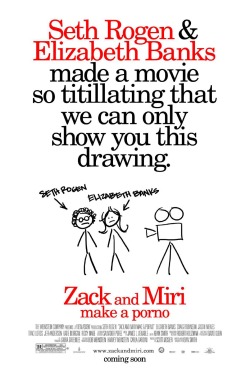 Note: This article was originally published in Technician on October 28, 2008.
Note: This article was originally published in Technician on October 28, 2008.
-----
Zack and Miri yield crass yet empty comedy
There is a moment in Zack and Miri Make A Porno that everyone will remember. It’s the kind of thing that audience members immediately start talking about once the credits begin to roll, just to make sure they actually saw what they think they saw. Without giving too much away, all I’ll say is that it’s a joke involving human fecal matter that is so graphic and shocking, you’ll laugh simply because you don’t know how else to respond.
Such is the nature of Kevin Smith’s new movie: you’ll laugh not necessarily because what’s on screen is actually funny, but because not to do so would be to acknowledge that you’ve spent money on the kind of crass substance you could find on the Internet for free, or just by asking your friends to make a dirty joke.
The plotline is simple: Zack (Seth Rogen) and Miri (Elizabeth Banks) are long-time best friends who decide to make a no-budget pornographic film to raise money for their rent. But when it comes time for the two of them to “do the deed” on camera, their friendship is tested by the resulting complications. Think When Harry Met Sally with porn, and jokes that would make Ron Jeremy blush.
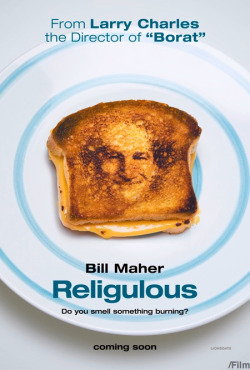 Note: This article was originally published in Technician on October 7, 2008.
Note: This article was originally published in Technician on October 7, 2008.
-----
Religulous dares to laugh at the sacred
If there’s one topic it’s often not okay to question and joke about, it’s religion. Evidently Bill Maher didn’t get the memo. The talk show host is the writer and star of Religulous, a documentary that follows him on his quest to “ask questions” and preach the gospel of “I don’t know.” It’s a film that even the devoutly religious should be able to enjoy, if only for the sheer amount of laughs, though it’s lacking as a serious examination of the issue of faith.
Maher, raised Catholic, spends most of the film poking fun of Christianity and Islam, with a few smaller religions like Scientology and Mormonism thrown in for good measure. His journey takes him everywhere from a Truckers Chapel here in Raleigh to the Vatican itself.
The film shines when raising questions. Why don’t Christians accept evolution? Are we really a “Christian” nation? Is Islam a religion of peace or war? Is it right to be certain about the end of the world and the afterlife? Doesn’t much of Christianity contradict the teachings of Jesus?